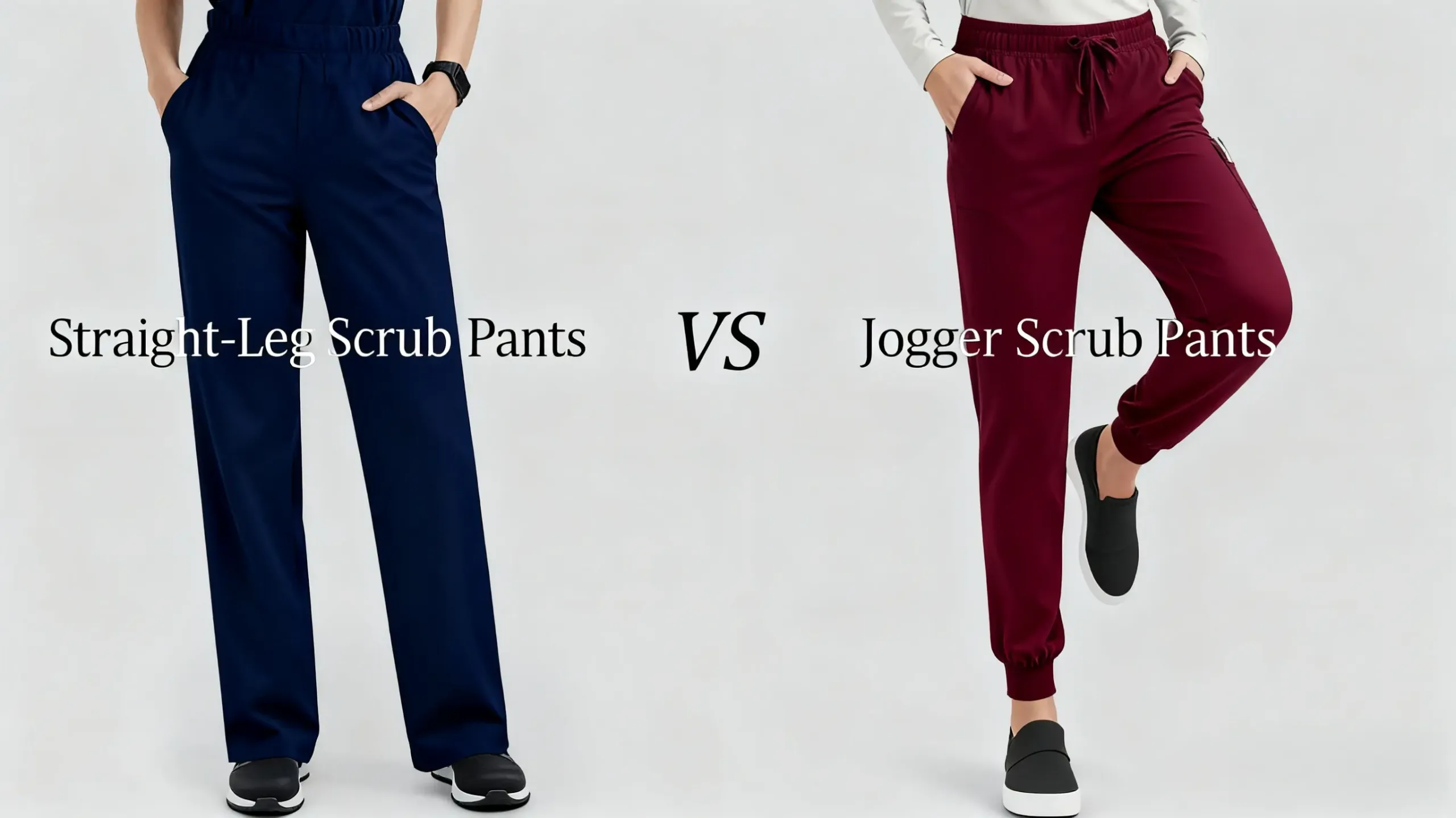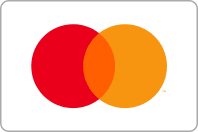What Is Lyocell Fabric
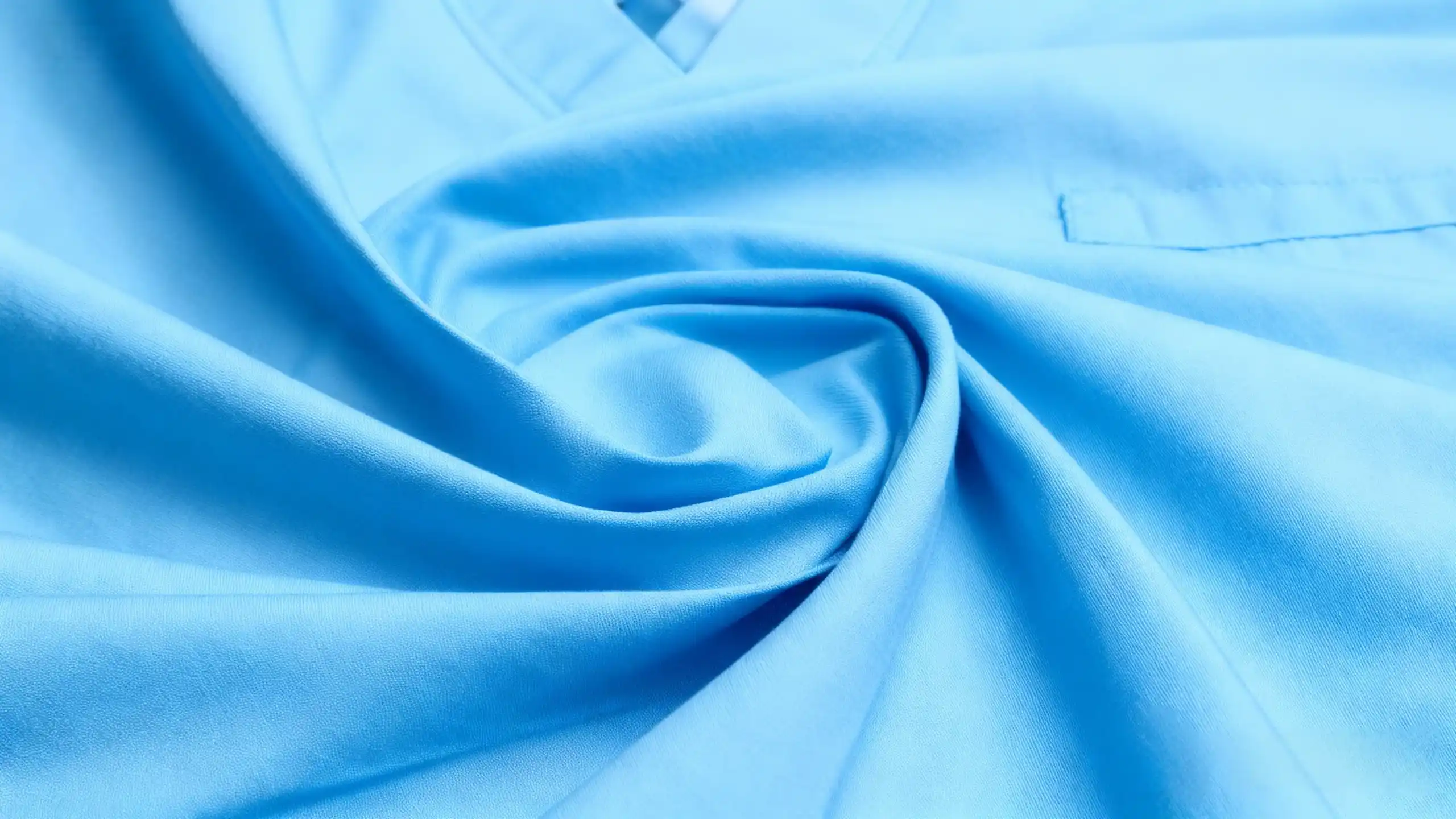
The textile industry is under pressure to deliver comfort, durability, and lower environmental impact at the same time. Lyocell has become one of the most talked-about materials in this shift. It feels soft on the skin, handles moisture well, and is produced with a process designed to reduce chemical waste. Because of this mix of performance and responsibility, lyocell is now used in apparel, bedding, uniforms, and other everyday products.
What Is Lyocell and How It’s Made
Lyocell is a regenerated cellulose fiber made from wood pulp. The raw material typically comes from fast-growing trees such as eucalyptus, bamboo, or beech. During production, the pulp is dissolved and then spun into long, smooth filaments that can be woven or knitted into fabric.
One major reason lyocell is considered a more responsible choice is its closed-loop process. In this system, the solvent used to dissolve the pulp is captured, purified, and reused. More than 99% of the solvent can be recovered instead of being released as wastewater. This lowers the environmental burden compared to older viscose-style production methods and supports cleaner, more controlled output.
The result is a fabric with a smooth hand feel, a subtle natural sheen, and strength that holds up in daily use.
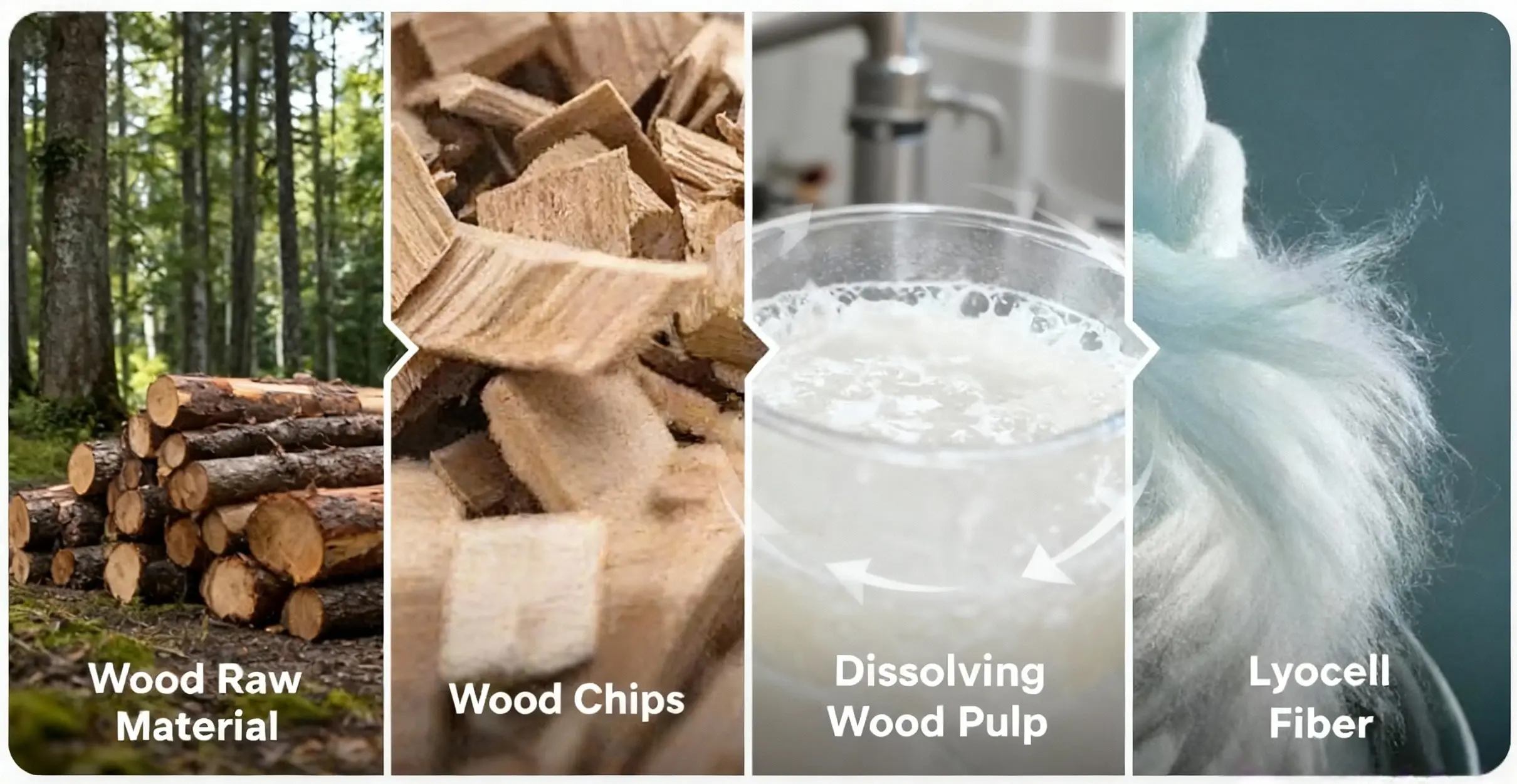
Why Lyocell Stands Out
Comfort and Performance Advantages
Breathability and Moisture Management
Fabric made with lyocell is known for its ability to absorb and release moisture efficiently. Instead of trapping sweat on the skin, it helps move it away and lets it evaporate. This makes it popular for base layers, daily wear, and sleep products because the surface stays drier and cooler.
Gentle on Sensitive Skin
The surface of lyocell fibers is naturally smooth at a microscopic level. That reduces friction and helps prevent irritation. For people who find some synthetic fabrics itchy or clingy, lyocell often feels calmer and less abrasive. The way it handles moisture also makes it less likely to become an environment for odor-causing bacteria, which is valuable in long-hour work clothing and bedding.
Balanced Thermal Feel
Because the fabric helps manage humidity close to the skin, it supports a more stable personal microclimate. In warm rooms it tends to feel cool and breathable. In cooler rooms it does not become stiff or staticky. This balance is one reason lyocell is widely used in premium bed sheets and pillowcases that claim to “sleep cool.”

Practical Drawbacks to Consider
Even with its strong benefits, lyocell is not perfect, and buyers should understand the trade-offs before choosing it for large-scale use:
-
Care requirements: Lyocell prefers gentle washing. Strong alkaline detergents or bleach can weaken the structure of the fiber. It should be washed with mild or neutral detergent.
-
Wrinkling: Pure lyocell can wrinkle. Blending it with cotton or recycled polyester improves wrinkle recovery and makes maintenance easier.
-
Cost: The production method is more advanced than basic cotton spinning or standard polyester extrusion. As a result, products made with lyocell may come with a higher price point.
-
Drying time: Because the fiber can hold moisture inside its structure, air-drying may take longer than fast-dry synthetics.
None of these points are deal-breakers, but they affect how brands position the fabric. Many companies choose lyocell blends to get the comfort and sustainability story without pushing costs or care difficulty too high for consumers.
Tencel™, Lenzing, and the Meaning Behind the Name
In the market, shoppers often see the word Tencel™ on care labels and assume it is simply another word for lyocell. The reality is more specific.
Tencel™ is a registered trademark of the Lenzing Group, an Austrian company known for controlled sourcing and certified low-impact production. In simple terms: all Tencel™ Lyocell is lyocell, but not every lyocell is Tencel™. The Tencel™ label signals traceability, consistent quality, and documented environmental performance.
For sourcing teams and buyers, this matters. When a supplier lists Tencel™ Lyocell, it usually means the material comes with verifiable standards on wood origin, solvent recovery rate, and process transparency. When a supplier lists generic lyocell, you should still evaluate the quality, but the certification and documentation may vary.
Where Lyocell Is Used
Lyocell is no longer limited to niche eco-fashion. It is already integrated into mainstream product categories:
-
Apparel: Shirts, blouses, dresses, loungewear, and uniforms. The fabric drapes well, resists that “plastic shine” of cheap synthetics, and feels premium on the skin.
-
Workwear and medical use: Long-shift garments such as scrubs benefit from breathability, softness, and moisture control.
-
Home textiles: Bedding, pillow covers, and duvet covers marketed for “cool sleep” often rely on lyocell for temperature comfort and a smooth touch.
-
Blended fabrics: When mixed with cotton, the result is softer and more fluid. When mixed with wool, the hand feel becomes more elegant and less scratchy. When mixed with polyester, wrinkle resistance and durability improve.
This flexibility across fashion, performance wear, and home goods is a major reason lyocell keeps gaining share.
Care and Maintenance
To get the best lifetime value from products made with lyocell, proper care is important.
Washing
Use a gentle cycle and cool to warm water. Choose a neutral or silk-friendly detergent. Avoid chlorine bleach. If stain treatment is needed, oxygen-based cleaners are usually safer than harsh whitening agents.
Drying
Do not twist or wring the fabric aggressively. Press water out, reshape the garment, and hang it or lay it flat in the shade. Direct sun and high tumble-dryer heat can cause shrinking or surface distortion over time.
Ironing
If wrinkles appear, a low to medium iron setting or light steaming is usually enough. Because the fabric surface is naturally smooth, heavy pressing is rarely necessary.
Following these steps helps maintain drape, color, and softness, and reduces early fiber breakdown.
Why Lyocell Matters for Sustainability
Lyocell is often positioned as part of the answer to cleaner textile supply chains for two main reasons:
-
Renewable raw source
The base material is plant-derived cellulose rather than petroleum. Responsible forestry and managed plantations support controlled harvesting instead of random logging. -
Closed-loop production
The manufacturing process focuses on solvent recovery and reduced discharge. Compared with traditional viscose routes, this helps cut chemical loss into water systems.
In short, lyocell is not only about comfort. It is also a technical story about process control, cleaner chemistry, and resource efficiency. As buyers and end consumers become more aware of these factors, demand for low-impact fabrics continues to rise.
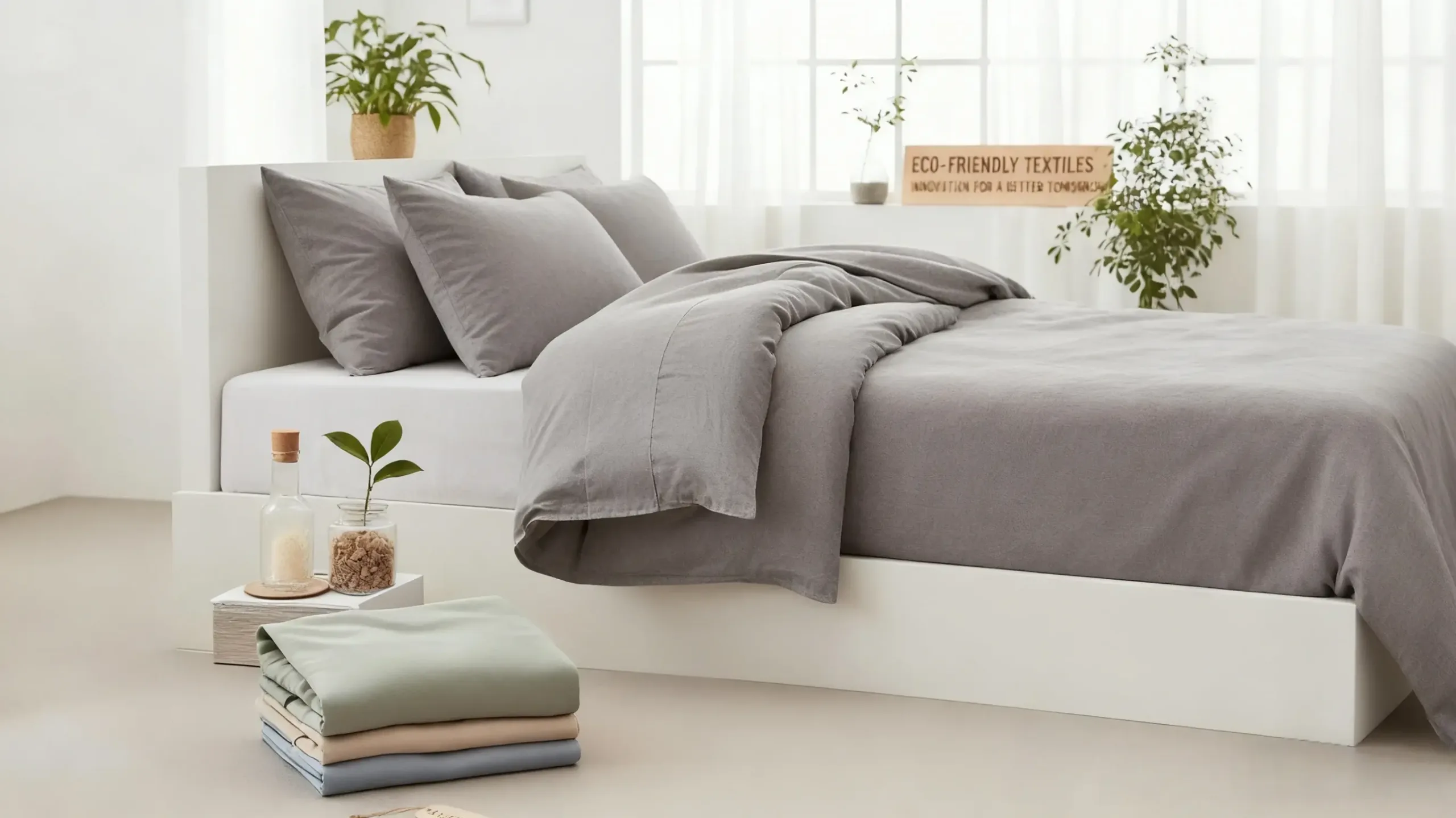
Where the Market Is Going
What was once a premium, niche “eco” fabric is moving into everyday basics. Large brands now position lyocell as a smarter alternative to either heavy cotton or low-cost synthetics. The balance is clear: soft feel, strong performance, and a credible sustainability narrative.
For companies that want to offer breathable, skin-friendly products while meeting modern environmental expectations, lyocell is becoming less of a trend and more of a baseline requirement.
Contact Us Now>>>Contact Us
Learn more about us>>>LANO SCRUB MANUFACTURER



